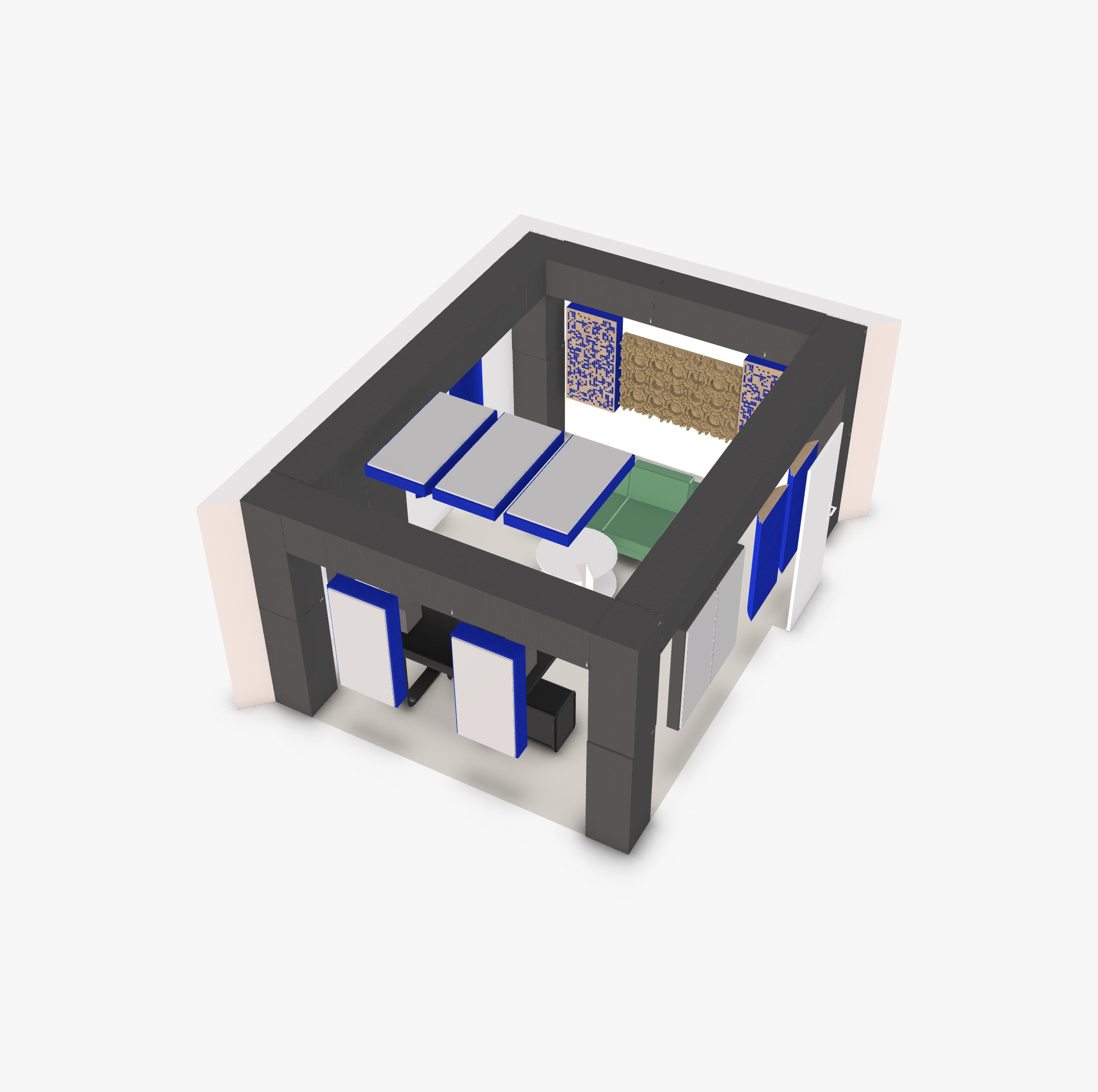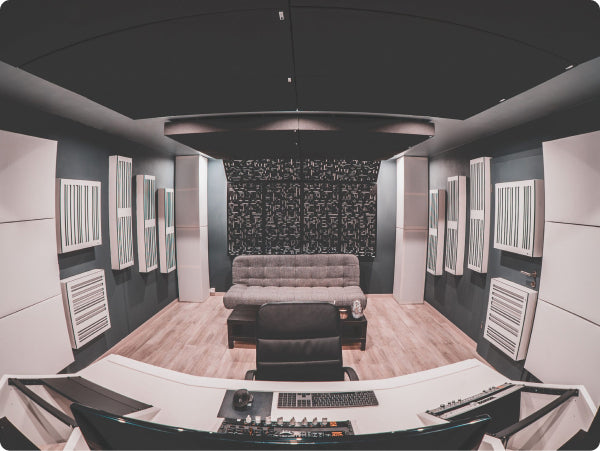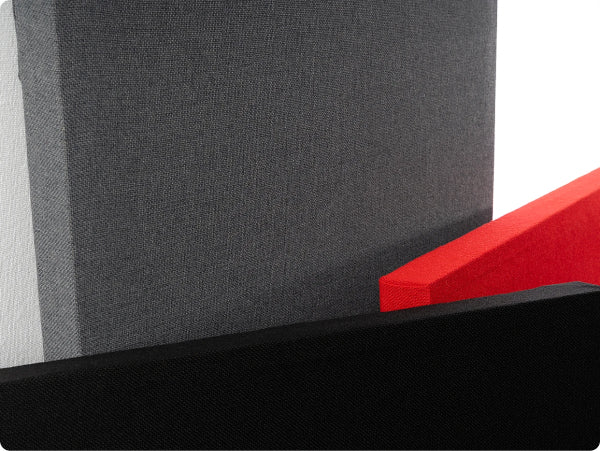
Custom Plans for Every Space and Budget
No matter the size of your room or your level of experience, we’ll work with you to create a treatment plan that fits your goals and your budget — whether it’s a simple upgrade or a full build-out.
We regularly advise on:
- Control rooms & recording studios
- Hi-fi listening spaces & home cinemas
- Practice & rehearsal rooms
- Conference rooms & offices
- Churches, venues, restaurants — and more

What You'll Get
- A personalized acoustic treatment strategy using GIK Acoustics products
- Expert product recommendations, quantities & placement
- In-depth analysis of room measurements
- Optional 3D room renders to help visualize your treatment
- Advice based on your needs, not guesswork
Start in Minutes
Just fill out our Acoustic Advice Form – including a few photos of your space – and one of our consultants will get back to you within one business day.
It’s free, it’s personalized, and it’s the smartest step toward better sound.
Core Acoustic Treatment Strategies
Understanding the different types of acoustic treatment is essential for designing an effective layout. Here’s a breakdown of the primary solutions we’ll probably talk about for your room.

Bass Traps: Controlling Low Frequencies
Bass frequencies have longer wavelengths and tend to build up in the corners of the room. Installing corner bass traps helps reduce muddy low-end response, tightening up the sound for better clarity and impact. Options include:
- Broadband with no additions. Effective across a wide frequency range, from bass through midrange and into treble
- With Range Limiters installed. Maximize low-end absorption without over-damping the highs with our FlexRange Technology
- Stackable Corner Devices. Optimize low-frequency absorption with freestanding units that just stack up in the corners. Several sizes/models available, including hybrid bass trap/diffusers.

Acoustic Panels: Managing Reflection Points
Mid and high frequencies reflect off walls, ceilings, and floors, causing phase issues and flutter echo. Absorption panels placed at first reflection points, rear walls, and ceilings reduce these problems from the reflected sound and improve clarity. If we use thicker panels in this role, then they will also contribute to low frequency management for even better overall results. Popular choices include:
- Classic or FlexRange Acoustic Panels are a perfect low-profile solution for reflection points on side walls and ceilings
- Classic or FlexRange Panel Bass Traps are a thicker broadband solution for more low-frequency absorption
- FreeStanding Panels are great for flexible room configurations or if you’d rather not mount anything

Diffusion: More Neutral and Natural Sound
For larger rooms or spaces where preserving natural ambiance is a priority, diffusers help scatter sound waves evenly rather than fully absorbing them. Acoustic diffusers are ideal for back walls in home theaters, mixing rooms, and listening rooms.Popular choices include several types of diffusers:
- QRD-style diffusers like Q7Ds, Q11Ds, and Gotham N23s. These devices are pure diffusers and produce the most efficient performance per square foot.
- Binary-style hybrid diffusers like Amplitude and SlatFusor panels. These devices provide a combination of absorption and diffusion for a very balanced sound.
- Poly diffusers like the Evolution PolyFusor or create the scattering effect from the curved front face. And the rounded shape is just the ticket for certain aesthetics.
Real Expertise. Real Results
Our team consists of seasoned professionals with deep experience in pro audio and room acoustics. They’ll guide you through the process — from understanding your space to recommending the right GIK Acoustics treatments in the right places — so you get real improvements you can hear and the most out of your investment!
Hailing from the UK, Paul grew up in a very musical family and taught himself to play several instruments by ear from an early age. During a successful career as a recording engineer he became obsessed with acoustics and studio design. He has gone on to design hundreds of studios from the ground up all over the world. Contact Paul today to receive expertly tailored advice regarding your own room acoustics.
Chris brings hands-on experience as a musician, recording engineer, and live sound engineer. His passion for acoustics grew naturally through years of building and refining his own studios, where he combined technical expertise with creative problem-solving. At GIK, he applies that blend of musical insight and engineering know-how to help clients create spaces that sound their best.
John is an experienced Acoustic Designer at GIK Acoustics, with a strong background in audio engineering, live sound, and room acoustics. His deep knowledge of room acoustics, acoustic treatment strategies, sound system optimization, and translating acoustic theory into real-world solutions makes him a go-to expert for anyone looking to improve the sound of their space—whether it’s a home studio, listening room, or professional venue.
With over two decades as a drummer across multiple genres, Ryan has immersed himself in the world of sound. Driven by a passion for helping others, Ryan draws on his background to make the dark art of acoustics approachable, designing environments at GIK Acoustics that inspire musicians, music, and movie lovers to feel confident and expressive by blending visual appeal with acoustic precision.
FAQs
How do I know what type of treatment my room needs?
Each room is unique. Our Free Consultation Form helps us understand your space, along with whatever you are doing in the space that needs better sound. You can select your room type from many options, such as home recording studio, control/mixing room, podcasting or voice recording, listening room, home theater, or even just an echo-y space that’s unpleasant to spend time inside. With that information we can provide recommendations tailored to your needs.
Can I use acoustic foam instead?
Most foam is not an effective solution for low-end control. GIK's high quality absorbent materials offer significantly better broadband absorption. Choosing the best design and absorption material for onsite DIY builds can be tricky, which is a great reason to consider using GIK products with proven performance, visually and sonically. Our products greatly outperform common sound-absorbing foam panels.
How does treating a room help vocals and instruments?
Proper treatment ensures clear vocals, detailed instrument recordings with more direct sound and less room sound leaking into the tracks as compared to recording in an untreated room. Similarly, mixing will allow you to more easily achieve an even mix balance, preventing muddy or harsh sound so you can work more quickly and confidently with better results.
Do bass traps help in small rooms?
Yes! Small rooms suffer from significant bass buildup, and these thicker devices help smooth out frequency response and standing waves. In smaller rooms, the problematic frequencies are often higher in the bass range, where there is more competing energy in most music. Bass trapping help a ton especially in small rooms.
Does it help to mount panels with an air gap?
In most cases, yes! That said, if you have enough space for an airgap you are generally better off using a thicker panel, flush mounted. Our Design team can help you navigate the best options for the available space for premium performance.
How is sound absorption measured?
Sound absorption is not measured in decibels or dB per frequency like the more familiar equalization curves or frequency response graphs, but rather in Sabins. Or, sometimes the data is better understood as an absorption coefficient, which is Sabins per square foot.
How easy is installation?
Many of our products are freestanding and require no installation, like corner bass traps you can stack floor to ceiling! But if you wish to install them the basic idea is like hanging a picture frame, using normal fasteners like drywall anchors.





